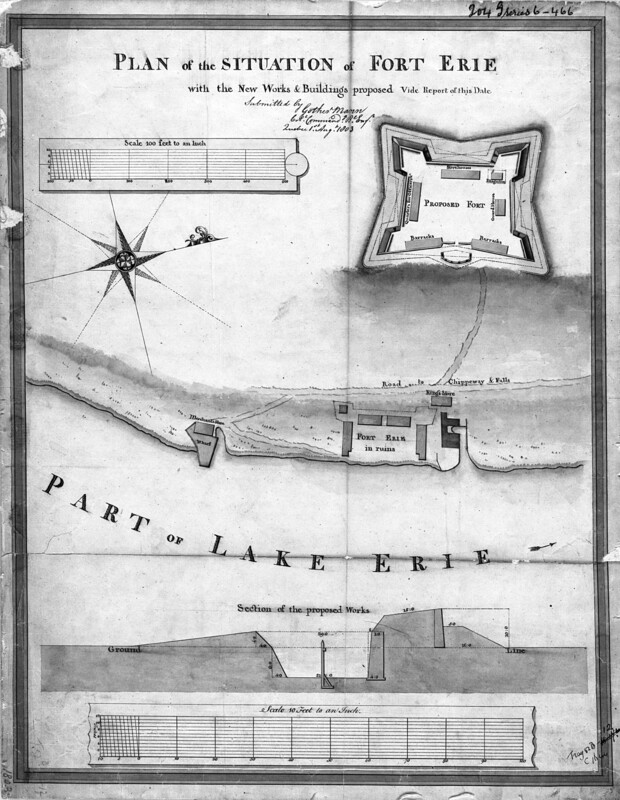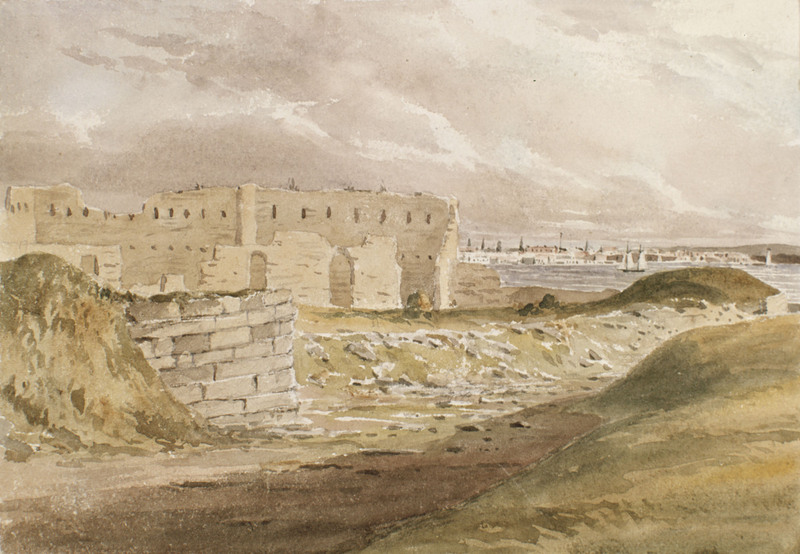Fort Erie
The original Fort Erie was built in 1764 and was the first fort built on the Canadian side of the Niagara River. It was located closer to the shore of the river than the current fort. It was used as a supply depot and as a port for ships carrying troops, passengers, and merchandise to the Upper Great Lakes. During the American Revolution the fort was used by British troops, Loyalist Rangers and Six Nations Warriors. Unfortunately, its proximity to the water resulted in regular damage from severe storms. In 1803 plans were made to build a new fort further from the shore. It was constructed of durable flintstone and was much larger than the original fort.
The new fort was not yet complete when the War of 1812 began. After an American invasion in Newark (Niagara-on-the-Lake) in May of 1813, British and Canadian troops were ordered to withdraw from the fort. It was occupied by the Americans until late 1813, when they retreated back to the United States. The British resumed construction of the fort, only to be forced to withdraw once again when the Americans invaded on July 3, 1814. The Americans then advanced on the Niagara frontier, capturing Chippawa and engaging with the British in a bloody battle at Lundy's Lane. On July 26 they retreated to Fort Erie immediately following the battle at Lundy's Lane. The British arrived at Fort Erie on August 4 and began a prolonged siege on the fort that continued until late September. They were unable to regain possession of the fort, but the Americans abandoned it in early November and retreated to Buffalo. The Americans destroyed the fort so that it could not be used by the British. The war formally ended a few months later.
By the mid-1850s, Fort Erie was part of the Underground Railroad as a crossing point into Canada. And in 1866 the Fenians used the ruins of the Fort as a base for their raid on Niagara. In 1937 reconstruction of the fort began and it was restored to its 1812-1814 condition. It opened on July 1, 1939 and is operated by the Niagara Parks Commission.

